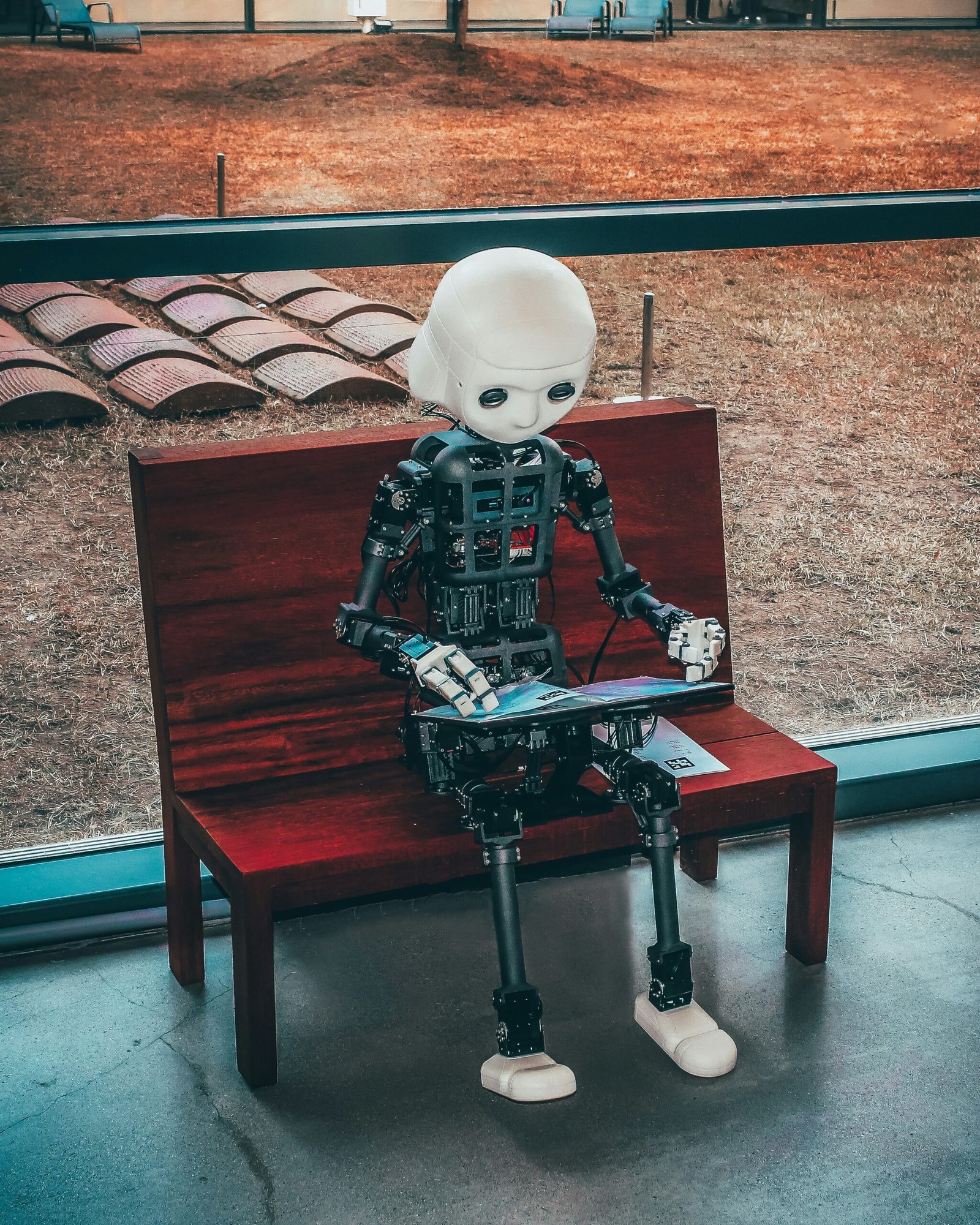The AI Revolution in Web Development
As we progress deeper into the digital age, the fusion of artificial intelligence (AI) with web design and development is becoming increasingly pronounced. This revolution in AI technology is reshaping the landscape of how websites are being created and maintained. Designers and developers are beginning to rely more heavily on AI-powered tools that promise efficiency, innovation, and optimization, leading to a significant transformation in the traditional methods of web creation.
A recent interaction with a client starkly illustrates this shift. The client, intrigued by the rapid advancements in AI, questioned the necessity of having a dedicated web developer in an era dominated by sophisticated AI applications. This query encapsulates a growing concern among professionals in the industry: will the rise of AI tools diminish the role of human creativity and judgment in web development? It signals an essential discussion about the balance between the capabilities of AI and the irreplaceable value of human expertise.
While AI can automate numerous tasks and assist in design processes with predictive analytics and data-driven insights, it is essential to recognize that the subtleties of human emotion, aesthetic judgment, and user experience remain critical components of successful web design. The interplay between AI’s efficiency and human intuition is pivotal in delivering not only functional websites but also those that resonate with users on a more personal level.
As we delve further into the ways AI is influencing web development, it is important to strike a balance that fosters collaboration between human professionals and emerging AI technologies. In doing so, we can pave the way for a future where both AI-driven approaches and human creativity coalesce to create remarkable digital experiences.
Understanding AI’s Capabilities in Web Design
Artificial Intelligence (AI) is rapidly transforming the landscape of web design and development by introducing a range of powerful functionalities that enhance efficiency and effectiveness. One of the primary areas where AI shines is in automated coding. Modern AI algorithms can analyze and generate code snippets based on user input or predefined templates, significantly reducing the time required for developers to create and test web applications. This capability not only streamlines the coding process but also minimizes the likelihood of human error, allowing developers to focus on more complex tasks that require creative and strategic thinking.
Another notable aspect of AI’s role in web design is automated content generation. With AI-driven tools, designers and developers can effortlessly create written content tailored to the needs of their target audience. These tools can analyze data trends, user behavior, and historical content performance to generate articles, product descriptions, and marketing copy that resonates with users. This ability to produce relevant content quickly can lead to enhanced user engagement, as well as provide businesses with a competitive edge in the digital marketplace.
Furthermore, AI has made significant strides in image creation and manipulation, enabling designers to generate visually appealing graphics without requiring extensive design skills. AI-powered tools can create logos, banners, and other graphical elements based on specific design parameters and brand guidelines. This not only saves time but also opens up creative possibilities that may not have been achievable through traditional design methods. By leveraging AI, designers can explore new styles and variations, facilitating a more innovative approach to web design.
Overall, AI’s functionalities in web design offer a multitude of benefits that enhance productivity, creativity, and user satisfaction. As these technologies continue to advance, their integration into the web design process is likely to become increasingly commonplace.
The Quality Factor: Human Touch vs. AI Precision
The emergence of artificial intelligence (AI) in web design and development has prompted a fundamental shift in how quality is perceived and maintained in digital outputs. While AI offers impressive precision in tasks such as coding and layout optimization, the nuances integral to creating user-centric designs often hinge on human intuition and creativity. The capability of AI to analyze vast datasets and identify patterns enables it to generate code and design mockups rapidly, yet it may inadvertently overlook the subtleties that significantly enhance user experience.
Human web developers possess the ability to empathize with users, understanding their motivations and emotions in a way that AI may not emulate effectively. This human touch translates to the creation of tailored experiences that resonate on a personal level with audiences. For instance, web designs that are aesthetically pleasing and meet the emotional needs of users often come from a deep understanding of cultural nuances and individual preferences, aspects that current AI tools may struggle to fully grasp.
Moreover, the iterative process of refinement that human designers engage in allows for a level of experimentation and creative exploration that is uncommon in AI-generated output. A human developer can assess the impact of modifications in real time through user feedback, leading to innovative solutions that go beyond standard best practices often followed by AI tools. This human-driven adaptability is vital in maintaining relevance and satisfaction in an ever-evolving digital landscape.
In considering the potential trade-offs between reliance on AI versus the irreplaceable human touch, it becomes clear that while AI can streamline processes, it may not consistently deliver the depth of quality that bespoke human creativity offers. A hybrid approach, which leverages AI to enhance productivity while retaining human oversight for artistic intent and emotional engagement, might be the most effective strategy moving forward.
The Role of Web Developers in an AI-Powered Landscape
As artificial intelligence (AI) technologies continue to revolutionize various sectors, the field of web design and development is undergoing a significant transformation. While AI tools offer remarkable efficiencies and capabilities, the role of skilled web developers remains crucial in this evolving landscape. Developers are not just mere implementers of technology; they are essential guides who help navigate the complexities that AI introduces to web projects.
AI can automate numerous tasks, from basic coding to more complex design decisions, which may seem to diminish the necessity for human developers. However, skilled developers play a vital role in shaping how these tools are applied. AI technologies are often designed to assist developers, resulting in workflows that are enhanced rather than replaced. For instance, developers utilize AI-driven analytics tools to gain insights into user behavior and preferences, allowing them to create more personalized and effective web experiences that align with business objectives.
Furthermore, deploying AI effectively within web development requires human oversight to ensure that outcomes meet the intended purpose. Developers must assess the applicability of AI solutions within specific project contexts, selecting the right tech stack and frameworks, and adapting to the unique needs of their clients. This discernment is instrumental in bridging the gap between technical capabilities and user experience, ensuring that AI implementations are user-friendly and functional.
Ultimately, while AI dominates many aspects of web design and development, it is the skilled developer who harmonizes technology with creativity and practicality. Their expertise ensures that AI tools are not only utilized effectively but also aligned with the overall objectives of the business. As the industry continues to evolve, the collaborative relationship between AI technologies and web developers will likely define the future landscape of digital experiences.
AI Limitations: What It Can’t Replace
While artificial intelligence has significantly transformed web design and development, it is important to recognize its inherent limitations. AI excels in organizing data, automating repetitive tasks, and optimizing processes, yet it falls short in several critical areas that define exceptional web experiences. One of the most prominent limitations is the inability of AI to replicate human creativity. Design is deeply rooted in artistic expression, exploring aesthetic principles, and innovative ideas, aspects that AI algorithms struggle to replicate authentically. The nuance of imagination and the ability to generate unique concepts stem from human experiences and emotions, which cannot be quantified or emulated by machines.
Additionally, AI lacks empathetic understanding. Effective web design often requires a deep connection to the end-users’ emotions and needs. Designers employ empathy to craft intuitive user experiences that resonate with people on a psychological level. In contrast, AI systems, no matter how advanced, cannot comprehend human feelings or the emotional context behind user interactions. This gap can lead to designs that may be technically sound yet emotionally detached, potentially alienating users.
Moreover, AI cannot encapsulate the diverse visions of various stakeholders involved in a project. Each project is influenced by the unique perspectives and goals of its contributors, including clients, designers, and marketers. AI might assist in data collection and analysis, but comprehending and prioritizing these diverse stakeholder visions requires an understanding of human dynamics and relationships, an area where AI has limitations.
Finally, the depth and richness of human experience play a vital role in web design and development. Experiences, culture, and context shape how individuals engage with digital content. While AI can analyze patterns and trends, it cannot draw from the vast spectrum of human experience that informs meaningful design decisions. Recognizing these limitations is essential for leveraging AI effectively while ensuring the irreplaceable human touch remains at the forefront of web design and development.
Striking a Balance: Using AI Wisely
The advent of artificial intelligence (AI) in web design and development has brought forth remarkable capabilities, but it also necessitates careful consideration of how these tools are utilized. Striking a balance between harnessing AI’s potential and preserving the invaluable human element in web projects is essential for ensuring quality results. This can be achieved by leveraging AI in a manner that complements rather than replaces human creativity and intuition.
One of the first steps for web developers and clients is to define clear roles for AI and human input. AI can automate routine tasks such as code generation, website testing, and even content creation, freeing developers to focus on more complex challenges. However, it is crucial to ensure that human oversight persists, particularly in areas requiring subjective decision-making, such as design aesthetics and user experience. By setting boundaries on AI tasks, developers can maintain a high standard of quality while reaping the benefits of automation.
Furthermore, fostering collaboration between AI systems and human team members can enhance project outcomes. Developers should use AI tools as augmented assistants, allowing their insights to guide the decision-making process. For instance, utilizing AI-driven analytics can provide data on user behavior and preferences, which human designers can interpret and implement creatively in their work. This synergy not only elevates the final product but also preserves the nuanced understanding that only human designers possess.
Lastly, continuous education and training are paramount. As AI technologies evolve, developers must stay abreast of new tools and best practices while honing their skills in interpreting and moderating AI outputs. This dual approach—embracing technological advancements while dedicating time to human-centered design—can lead to more innovative and effective web solutions.
Real-World Examples of AI in Web Development
Artificial intelligence (AI) has increasingly become a prominent player in the field of web design and development. Various businesses and organizations around the world have initiated successful projects harnessing AI technology to enhance user experience, streamline design processes, and improve website functionality. One notable example is the use of AI-powered tools like Wix ADI (Artificial Design Intelligence), which assists users in creating aesthetically pleasing websites tailored to their specific needs. This user-friendly platform leverages algorithms to analyze user preferences and generate designs that are both functional and visually appealing, showcasing AI’s ability to enhance creativity while reducing time spent on design tasks.
Another compelling instance is the deployment of chatbots in customer service on e-commerce websites. Companies such as H&M and Sephora utilize AI-driven chatbots that provide instant support and personalized recommendations based on user behavior. These chatbots not only improve customer engagement but also gather valuable data that can be analyzed to refine product offerings and marketing strategies. Such applications illustrate the transformative potential of AI, making web development more user-focused and efficient.
However, it is crucial to acknowledge cautionary tales where over-reliance on AI led to suboptimal results. For instance, an infamous case involved the AI-generated content on various news websites that inadvertently produced misleading headlines or spam-like articles. This situation illuminated the limitations of AI in discerning context and the importance of human oversight in content creation. The necessity for human intervention in web design and development cannot be overstated, as it ensures that the solutions provided by AI are not only innovative but also contextually appropriate and aligned with user expectations.
This interplay between AI and human expertise encapsulates the dual nature of its impact on web development, highlighting both its potential to enhance design and the risks associated with excessive dependence on automated solutions.
Future Trends: The Evolution of AI in Web Design
As artificial intelligence (AI) continues to advance, its influence on web design and development is expected to deepen significantly. Future trends indicate that AI will not only enhance existing capabilities but also introduce entirely new paradigms for creating and interacting with web content. One primary development that may emerge is the increased use of AI-driven design tools that can automate the creation of websites tailored to specific user behaviors and preferences. By learning from user interactions and data analytics, these tools can suggest designs, layouts, and navigation structures that are most likely to engage particular audiences.
Another anticipated trend is the rise of more sophisticated chatbots and virtual assistants, powered by AI. These tools are likely to evolve from simple query-response systems into robust conversational agents capable of delivering personalized user experiences. This shift will empower web developers to integrate seamless interactive features that enhance customer engagement and streamline support services. The implications for web development are profound, as creating these intelligent interfaces will require developers to continually adapt their skill sets and embrace new coding languages and frameworks.
Furthermore, the integration of AI in web accessibility represents a crucial trend for the future. AI technology can assist in automatically generating alternative text for images, ensuring that web content is more inclusive for individuals with disabilities. This capability not only meets legal requirements but also enhances the user experience for all visitors to a website.
As these trends unfold, web developers must stay informed and agile, continually reassessing their strategies and integrating AI-based solutions into their workflow. Adapting to the changing landscape of web design will not only be crucial for individual careers but will also ensure that the industry thrives in a future where technology and design increasingly converge.
Conclusion: The Path Forward in Web Development
As we navigate the intricate landscape of web design and development, the duality of artificial intelligence as both a boon and a challenge cannot be overstated. The integration of AI tools in web design has undeniably transformed processes, enhancing efficiency and enabling more personalized user experiences. However, it is critical to acknowledge that these technologies should not overshadow the creative spark that human designers bring to the table. Understanding the relationship between AI capabilities and human creativity is essential for achieving the best outcomes in web projects.
The innovations brought forth by artificial intelligence offer myriad opportunities for web developers and designers, from automating mundane tasks to providing robust data analytics for informed decision-making. Yet, as these technologies evolve, so too does the responsibility of professionals in the field to ensure that creativity and originality remain at the forefront. Balancing the technical advantages of AI with the artistry of human input is vital for developing websites that truly resonate with users and meet their needs.
To maximize the potential of web projects in this rapidly changing environment, stakeholders must embrace both AI tools and traditional design principles. Training and adapting to new technologies, such as machine learning and predictive design, while honing the innate creativity of individuals will create a more dynamic workflow. This synergy not only fosters innovation but also helps to push the boundaries of what is possible in web design and development. Ultimately, it is the collaborative effort between human insight and artificial intelligence that will shape the future of the digital landscape, paving the way for a more enriching web experience for all.




0 Comments